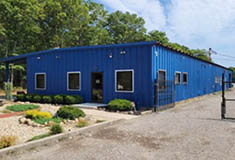An environmental update for the next generation: A more conservative approach to challenges - by Chuck Merritt

Environmental Consulting Corp.
?As real estate continues to be on the rise and the most recent phase one Environmental Site Assessment (ESA) standard approaches its two-year anniversary since it was implemented, this is a good time to provide an environmental update going forward. The industry unofficially began in 1994 with the introduction of the first guide for consultants to follow issued by the American Society of Testing Materials (ASTM). Twenty three years later it is still the de-facto standard that buyers and lenders turn to as the primary tool for due diligence and risk management. That time line also represents many of today’s younger real estate investors who have been introduced to the business by family members, mentors or a desire to get into real estate at an early age. So it is safe to state that this is the second generation of real estate professionals since the ASTM due diligence standard was introduced. Over the past two decades, the ASTM standard has evolved into a more comprehensive guide than its earlier versions. Terms such as All Appropriate Inquiry (AAI) and vapor encroachment were not part of the earlier version of the standard.
Today’s younger lenders are also being introduced to a more conservative approach to potential environmental challenges than their predecessors. More lenders now have in-house environmental consultants as part of the risk management team that may perceive more risk for the lender than the loan origination team. Today, federal, state and local agencies have introduced similar and yet very different requirements to the ASTM standard. Freddie Mac, Fannie Mae and the small businesses administration (SBA) all use the ASTM guidelines as a foundation for the type of due diligence report they require. Freddie Mac has a requirement of conducting radon testing in multifamily properties. This is considered part of the non-scope services in the ASTM standard yet required by that lender. New York City has an E-designation program in place throughout the boroughs on hundreds of sites perceived to have environmental challenges. These sites will require an additional level of investigation regardless of the conclusions within a phase one ESA.
Once equipped with a very basic array of tools and working under the moniker of “obvious signs of contamination” today’s consultant needs to be part detective, part business advisor and part fortune teller in order to provide the best information possible to their clients. The financial crisis of 2008-2009 reminded everyone the lesson that real estate is cyclical and it does not go up forever. Many properties that were not vetted correctly for environmental issues, ended up in a real estate owned (REO) portfolio of lending institutions. Investors who tried to buy and sell real estate for a quick profit without a proper understanding of potential environmental impacts within the soil, groundwater and air within a structure, found very few buyers during this period. Since history tends to repeat itself, similar mistakes may happen again.
The lesson for this generation of real estate investors and lenders is to understand the value the environmental consultant brings. The lowest price product available may not provide all the information needed to make prudent business decisions. Purchasers need to keep in mind that their risk tolerance may be different from the lender they are seeking financing from as well as potential partners/investors and the entity who may want to buy the property in the future. The more data the purchaser obtains during the due diligence phase the more comfort potential lenders and business partners will garner.
Most commercial real estate has passed the seven-figure threshold in this region so the cost of a comprehensive study is minimal to protect that investment. The time to discover if there is an environmental impact to a property is during your due diligence, not the next person’s due diligence in which you are now the owner and potentially responsible for the cleanup.
.Chuck Merritt, LEED AP, is the president of Merritt Environmental Consulting Corp., Hauppauge, N.Y.
Suffolk County IDA supports expansion of A&Z Pharmaceuticals


The evolving relationship of environmental consultants and the lending community - by Chuck Merritt
When Environmental Site Assessments (ESA) were first part of commercial real estate risk management, it was the lenders driving this requirement. When a borrower wanted a loan on a property, banks would utilize a list of “Approved Consultants” to order the report on both refinances and purchases.








.gif)
.jpg)